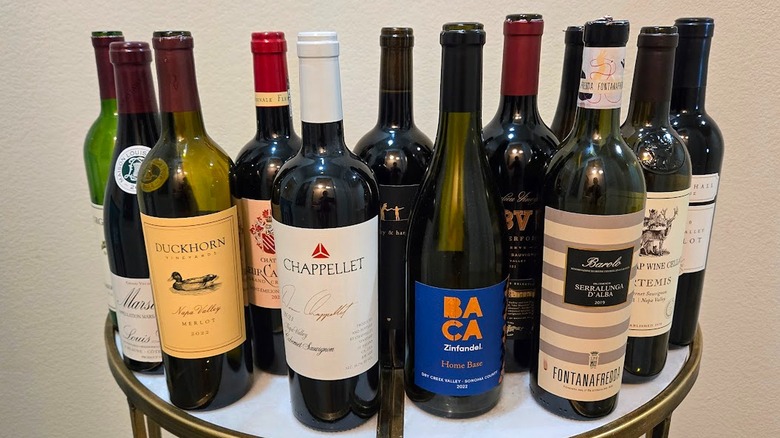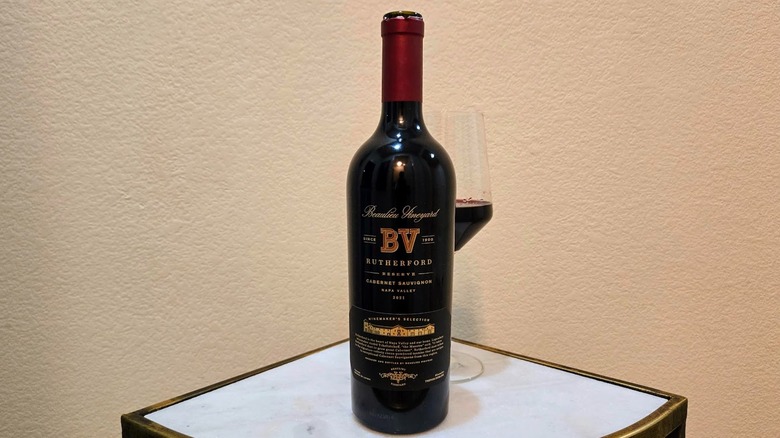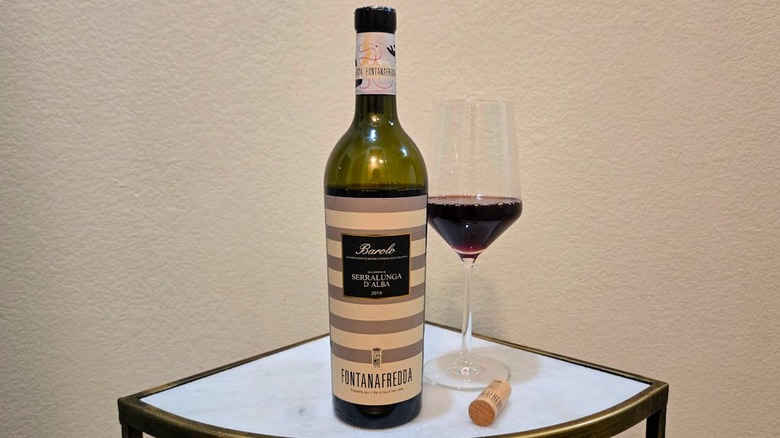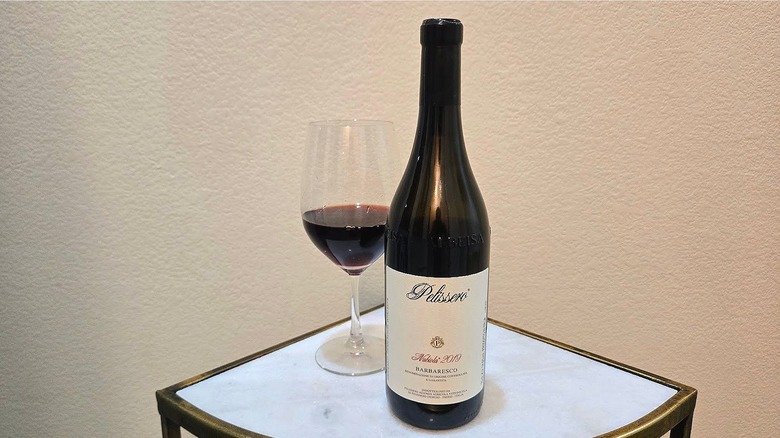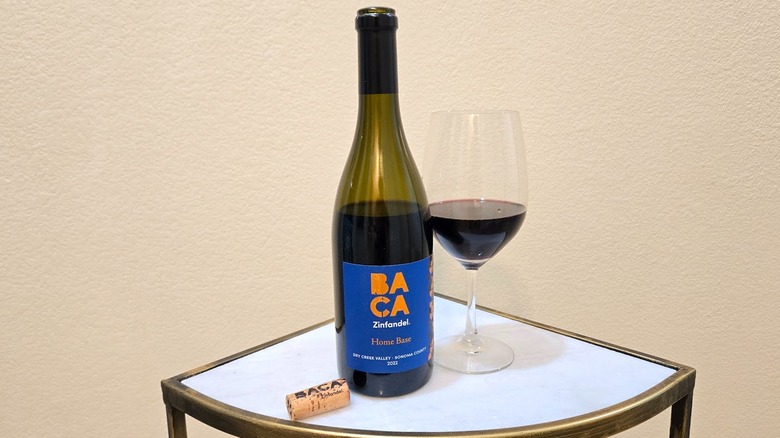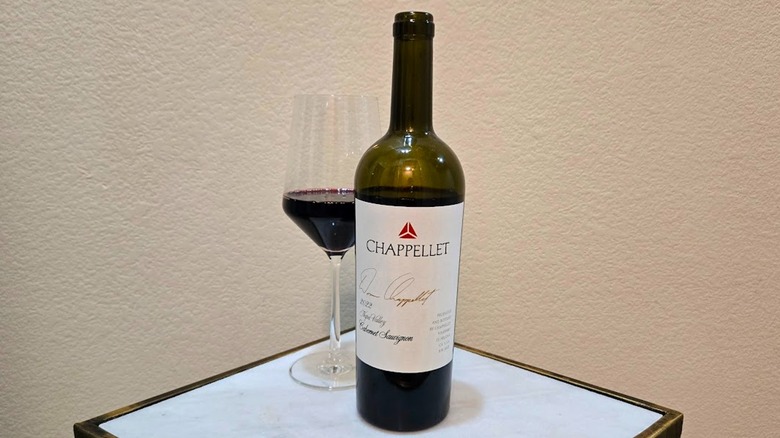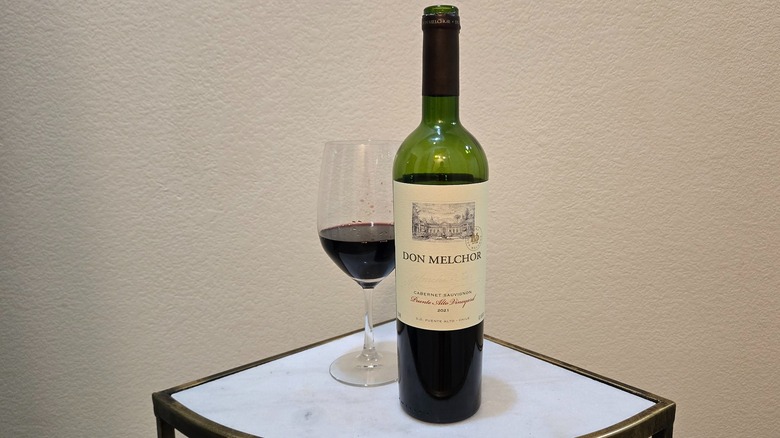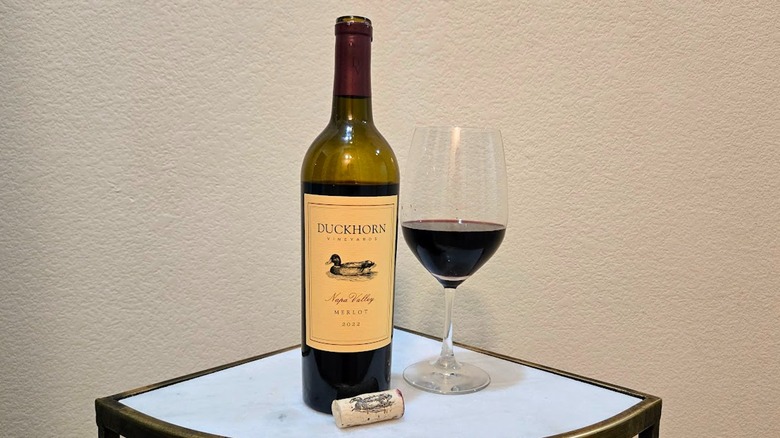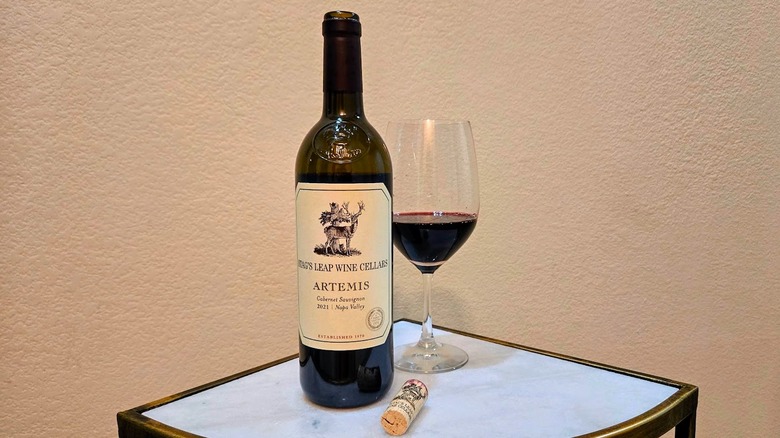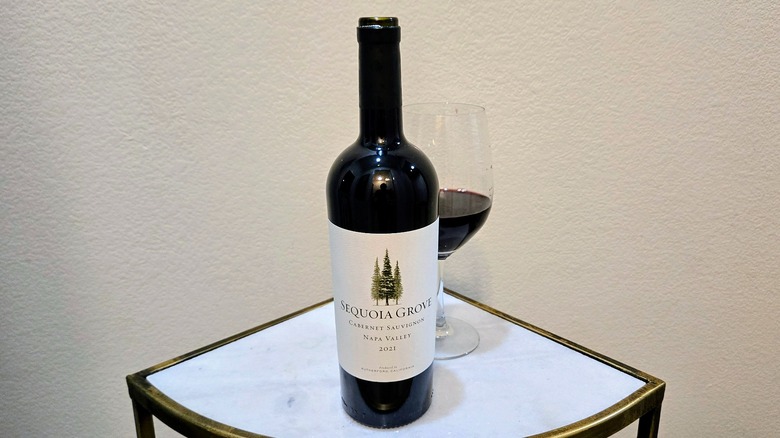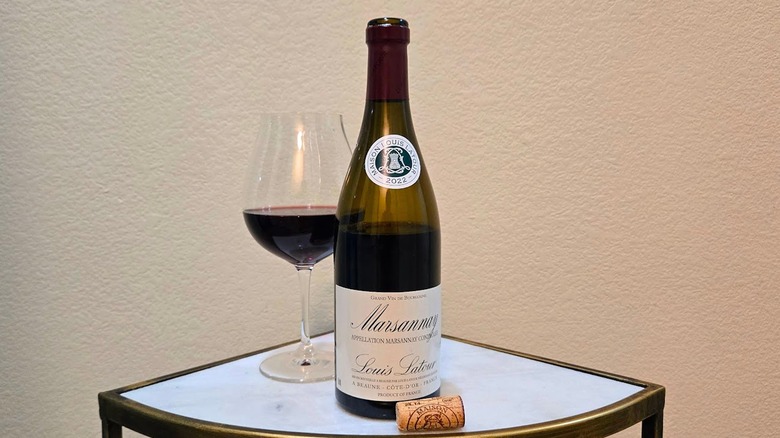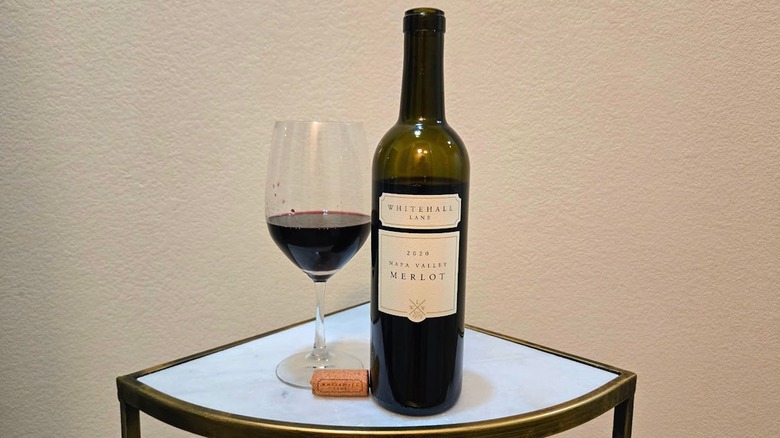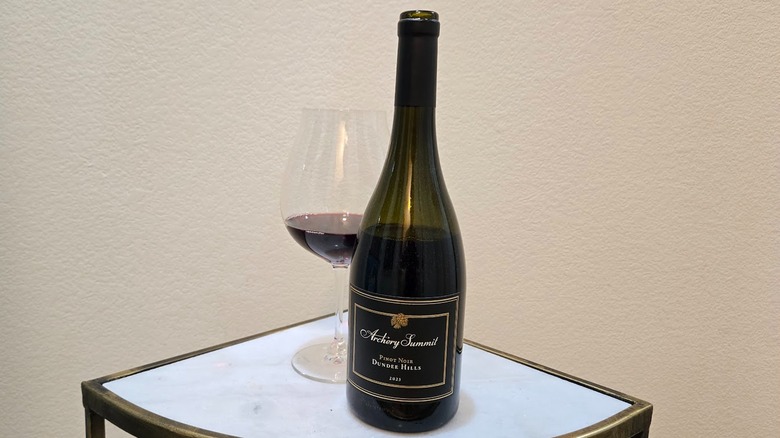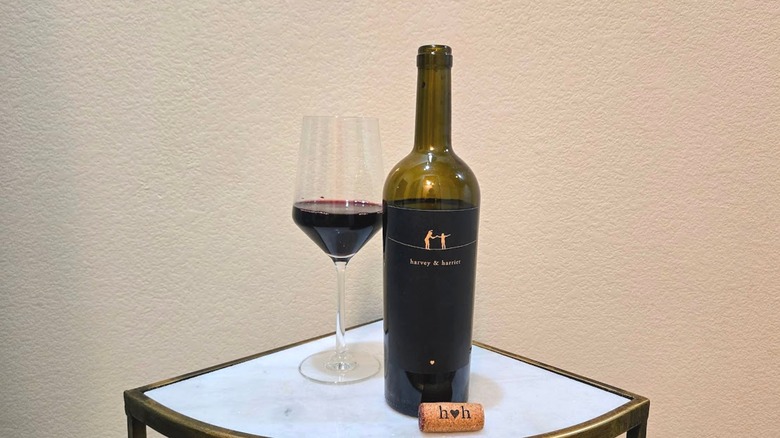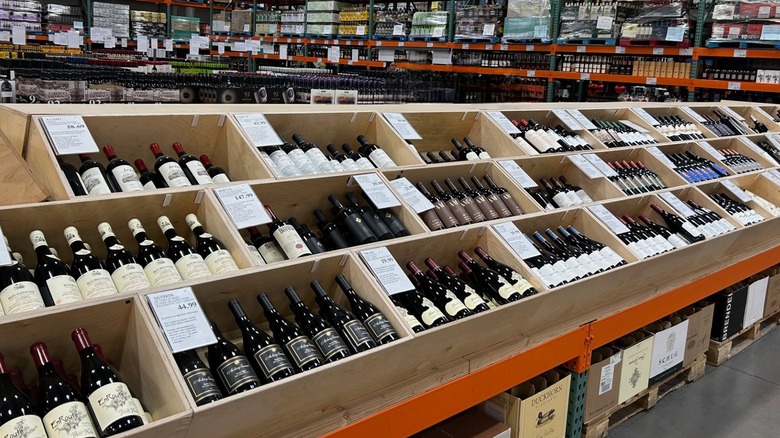The 17 Best Red Wines At Costco
Costco offers a range of curated, well-known bottles of wine often priced lower than liquor stores. The warehouse benefits from its sales volume, and often offers impressive discounts to its members. Its size allows it to offer selections intended for national distribution that may not be found in typical supermarkets. While many of the bottles are mainstream, Costco also offers a selection of gems just waiting to be discovered.
To uncover the best red wine offerings, I gathered several bottles and tasted them. I utilized my knowledge and training as a Certified Sommelier, wine writer, and judge to ascertain each wine's quality while considering the winery's history and provenance. Price was not a factor, as it can vary based on location, but all the bottles included are premium wines.
Some recommendations are based on firsthand impressions of promotional materials and products provided by the manufacturer.
Beaulieu Vineyards Rutherford Reserve cabernet sauvignon
Napa's Rutherford region's mineral-rich alluvial soils of sand, gravel, and loam are known for their dustiness. The well-draining soils allow the vine's roots to dig deep, taking on the characteristics of the land, with the wines bringing forth the area's characteristic earthiness. One of the leading wineries from the area showcasing this Rutherford dust is the iconic Beaulieu Vineyards, or BV.
Napa Valley legend André Tchelistcheff led the winery for decades. He was at the forefront of innovation, showcasing a terroir-driven wine-making approach. Instead of manipulating the fruit to produce a particular style of wine, Tchelistcheff allowed regional characteristics to shine, producing superior wines with authenticity.
BV Rutherford Reserve cabernet sauvignon captures Rutherford's fragrance in the bottle. The full-bodied wine comes from the region's benchlands, producing a bold taste of black fruit, graphite, espresso, dried herbs, and leather. The ripe and firm tannins bring tension and complexity to the nuanced wine. French oak aging for 22 months lends toast and dark chocolate, while rounding out the full-bodied palate.
Fontanafredda Barolo del Comune di Serralunga d'Alba
The first stop for robust red wine lovers delving into the world of Italian wines should be a Barolo. The home of the king of Italian wine is the northwestern Piedmont. With wines crafted from the bold nebbiolo variety, Barolo is considered the king due to its concentration, complexity, and tannic structure. Barolo holds the Denominazione di Origine Controllata e Garantita (DOCG) classification, which guarantees the wine's quality.
Fontanafredda was founded in 1858 by the first king of Italy. Today, the winery's estate vineyards are farmed organically while promoting biodiversity. Fontanafredda Serralunga d'Alba Barolo is from one of Barolo's premium villages, with limestone-rich marl soils, producing tannic wines. The wine ages for four years in large barriques, barrels, and the bottle, helping to tame the tannins' intensity and ensuring a well-rounded wine upon release. The full-bodied selection opens with fragrant wild roses, violets, and red fruits, leading to ripe cherries, blackberries, graphite, and tar. The tannins are expressive but not overwhelming, and the acidity is fresh, creating a pleasurable palate.
Pelissero Barbaresco nubiola
The counterpart to the king of Italian wines, Barolo, is the queen, Barbaresco. From the named area within Italy's northwestern Piedmont region, nebbiolo is also the variety for Barbaresco. However, Barbaresco tends to be softer and not as austere due to the slightly warmer temperatures of the area, which creates juicier, brighter fruit profiles and softer tannins. The historical name dating to 909 for nebbiolo was nubiola, likely coming from the Latin term "nebula" or "fog," which blankets vineyards during the harvest season.
Pelissero honors that history with its Barbaresco nubiola DOCG. The fruit is from six parcels within the winery's estate-owned vineyards. The wine melds fragrant rose petals, woody herbs, and black plum with ripe cherry and dusty leather. Though the tannins are bold, the palate has balance, ending with a velvety finish.
BACA Home Ranch zinfandel
Vintners Craig and Kathryn Hall's brand BACA focuses on premium zinfandel wines from some of the prized areas for the grape in Central and Northern California, including Howell Mountain, Rockpile, Paso Robles, and Dry Creek Valley. The couple's other properties, Hall Wines and Walt Wines, focus on Bordeaux and Burgundian varieties, respectively, allowing BACA to produce luxury selections from old vines of zinfandel that are decidedly Californian.
BACA Home Base zinfandel is made with fruit from 40 to 70-year-old vines within Sonoma's Dry Creek Valley. The area is known for producing refined expressions of zinfandel. Vineyards planted on the warm hillsides above the Russian River help fruit develop full-bodied character, while cool evenings keep fresh acidity intact. As the wine opens, aromas of wild berries meld with chocolate and wild herbs. These aromas give way to black fruits, crushed pepper, and toasted spice for a concentrated palate. BACA's spicy, fruit-forward flavors pair well with smoky raspberry chipotle barbecue ribs.
Chappellet Signature cabernet sauvignon
The signature of owner Donn Chappellet on a bottle of the Chappellet Signature Napa Valley cabernet sauvignon is a designation of quality – a symbol of approval from the vintner. Today, the wine includes only the best blocks of hand-selected fruit in the blend. Donn and Molly Chappellet founded their Napa Valley winery on Pritchard Hill in 1967. From its start, the winery has crafted cabernet sauvignon from the iron-rich, volcanic mountains of the region. The mountain regions of Napa, compared the valley floor, produce smaller grape berries, which in turn create highly concentrated wines.
The wine blends 79% cabernet sauvignon with supporting Bordeaux varieties, producing a textured wine with concentration, complexity, and intriguing structure. It has bold black cherry, toasted spice, and graphite flavors. The volcanic soils of Pritchard Hill, located in the Vaca Mountains, lend minerality to the full-bodied wine. Subtle woody herbs and espresso flavors make it ideal for a coffee-rubbed steak pairing.
Château Fleur Cardinale St. Émilion Grand Cru Classé Bordeaux
Costco carries an impressive selection of Bordeaux wines with an array of prices, from its under-$7 Kirkland Signature Bordeaux Supérieur to premium options that cost hundreds of dollars. I enjoy Right Bank of Bordeaux selections, where merlot and cabernet franc dominate the blend. Château Fleur Cardinale St. Émilion Grand Cru Classé Bordeaux is the flagship wine from the premium producer. It blends 62% merlot with 30% cabernet franc and 8% cabernet sauvignon.
The Grand Cru Classé is a regional classification awarded to prestigious wineries crafting exceptional selections. Selecting a wine that carries this distinction ensures quality. Layers of ripe blackberries, plum, and toasty vanilla show on the wine's opening, with a touch of chalk and spice. The tannins are firm yet balanced, with a supple, lingering finish.
Don Melchor cabernet sauvignon
Viña Don Melchor's story began in 1883 when Don Melchor Concha y Toro planted the first Bordeaux vines in the El Encino region of Chile's Puente Alto within the Maipo Valley. However, the full potential for the area's terroir was realized with the production of the first Don Melchor cabernet sauvignon wines in the 1980s and 1990s.
Today, the refined, luxurious wine from the B Corp-certified estate delivers an inviting palate and infinite approachability. Displaying authentic cabernet sauvignon characteristics, the wine shows red fruits, herbal, and floral notes that lead to blue and black fruits on the palate with structured texture. There is a softness that caresses the palate with welcome ease, like reconnecting with an old friend. It has the power to stand up to hearty, fatty fare, like a grilled ribeye steak. Yet the balance is such that you can enjoy it simply by pairing it with a conversation.
Duckhorn Napa Valley merlot
When Dan and Margaret Duckhorn opened their Napa Valley winery, they knew they wanted to craft elevated Bordeaux varieties. The couple also had a deep affinity for premium merlot, particularly those from Bordeaux's Right Bank from regions like Pomerol. They aimed to create a luxurious version of the variety from Napa Valley soils. Duckhorn's first release in 1978 included 800 cases of merlot from the winery's revered Three Palms vineyard in Calistoga.
Duckhorn Napa Valley merlot shows why the variety has become the signature grape for the prestigious brand. Winemaker Renée Ary takes a terroir-driven, hands-off approach, letting the wines tell the story of the vineyards. By blending fruit from throughout Napa, including cool Carneros and warmer Calistoga, Ary captures acidity, ripeness, and tannin, producing a wine with luscious balance. The wine opens with wildflowers, fresh herbs, dark berries, and ripe plum, leading to a generous, long finish.
Stag's Leap Wine Cellars Artemis
Warren Winiarski was one of the last century's most prominent Napa Valley winemakers. Winiarski passed in 2024, leaving a legacy of crafting premium cabernet sauvignon while mentoring the next generations of California winemakers. He was a winemaking pioneer and committed environmentalist. He opened Stag's Leap Wine Cellars in the prestigious Stags Leap region in 1970.
50-plus years later, the winery continues in his pursuits with selections like Stag's Leap Wine Cellars Artemis cabernet sauvignon. The Napa Valley selection takes its name from the Greek goddess of the hunt. With a full body and lush, chewy tannins, the wine pairs well with fatty, braised beef short ribs. It shows ripe boysenberry, plum, currant, tobacco leaf, and leather notes.
Goldeneye Anderson Valley pinot noir
Northern California's Anderson Valley lies 10 miles from the Pacific Ocean in Mendocino County. The total area spans a mere mile wide and 16 miles long. Though the region is small, the location is ideal for growing cool-climate pinot noir fruit due to the constant breezes blowing off the Pacific and the dense marine layer of fog it brings, which settles over the vineyards, keeping the fruit cool and the acidity fresh. Wines from the area have a rugged, refined rusticity.
Goldeneye Anderson Valley pinot noir highlights the region's character by blending fruit from the winery's three estate vineyards: Confluence, Gowan Creek, and The Narrows. The wine displays earthiness with forest floor and truffle, which meld with blackberries, black cherry, and black tea. Toasty spice and dried leather come through on the finish. Though the fruit and tannin are present, the acidity is as well, ensuring balance while enhancing the wine's overall appeal.
Sequoia Grove Napa Valley cabernet sauvignon
Napa Valley's Sequoia Grove Winery offers balance in each of its wines. Under the leadership of winemaker Jesse Fox, the wines have vibrancy and authenticity. Fox is a graduate of Le Cordon Bleu in Paris who moved to Napa Valley to work as chef de partie at The French Laundry. His experience in kitchens brought insight into producing wines with varietal character, terroir distinction, and delicious taste with an array of pairings, including a classic tenderloin beef roast or unique options like pan-seared salmon.
In its Napa Valley cabernet sauvignon, Fox blends fruit predominantly from the Rutherford sub-appellation, including from the winery's estate vineyards. The vineyards are the essential element for each Sequoia Groves wine. Rutherford is one of the largest and most diverse areas in Napa. One side of Rutherford is influenced by the volcanic soils that have run off the Vaca Mountain range, while the other consists of alluvial soils from the Mayacamas range. Well-draining alluvial soils bring structure and soft tannin to wines; volcanic soils lend concentration and earthy minerality. The resulting wine shows ripe blackberry, black cherry liqueur, caramelized plums, graphite, and bitter chocolate. The palate is focused and full-bodied with well-integrated tannins.
Louis Latour Marsannay Burgundy pinot noir
Marsannay is located in the northern Côte de Nuits region of Burgundy. The area is the entry to the Côte d'Or, meaning "golden slope," Burgundy's premier growing area. Marsannay is one of the few areas within Burgundy to produce red, white, and rosé wines. Its red wines use pinot noir to produce full-bodied, full-flavored selections.
Maison Louis Latour is one of Burgundy's premier producers, crafting elevated selections from fruit growing throughout the region. The Louis Latour Marsannay opens with an inviting fragrance of wild berries, cherries, and wildflowers. The plush, generous palate reveals ripe Morello cherry, blackberry, licorice, and spice with a mineral note that lingers throughout. The bold wine pairs well with full-flavored, meaty fare, like crispy roasted duck, venison stew, or mushroom ragù.
Château De Vaudieu Châteauneuf du Pape
Château De Vaudieu Châteauneuf-du-Pape is a robust, inky red blend from one of the Rhône Valley's most acclaimed areas. Situated in the southern Rhône Valley, the wines of Châteauneuf-du-Pape use a blend of up to 18 red and white grape varieties. However, the majority of the wines, including the Château De Vaudieu selection, are blends of grenache, syrah, and mourvèdre.
Fruit-forward grenache brings a well-rounded mouthfeel to the wine, while syrah adds structure to the wine's palate. Mourvedre brings deep, inky color and tannin. The first sips of this wine revealed the robust tannic power of the mourvèdre. The intensity softened after decanting, leaving raspberry, cherry, and strawberry jam with hints of wild herbs, crushed pepper, and mocha. The wine's robust character begs for food. Enjoying the wine with a slow-braised lamb shank will tame the meat's gamey qualities.
Whitehall Lane Napa Valley merlot
The Leonardini family meticulously cares for 157,411 grapevines across its 200-acre estate located in Northern California's Napa Valley and Sonoma County, predominantly in the Rutherford sub-appellation. Vintners have been cultivating grapes on its land since the 1800s. While cabernet sauvignon is the focus for much of the winery's production, it also crafts expressive selections from additional Bordeaux varieties, including petit verdot and merlot.
Whitehall Lane Napa Valley Merlot includes 82% merlot with a blend of supporting Bordeaux varieties to create a multi-layered wine with beautiful structure from the first sip to the last. It has complexity and depth, with more character than many merlot wines I have tried. Its aged for 20 months in a combination of new and neutral French oak, helping soften the palate. The finished selection melds red plum and ripe berries with milk chocolate and tobacco.
Grgich Hills Estate Napa Valley cabernet sauvignon
The wines of Grgich Hills Estate in Napa Valley use fruit grown exclusively from its estate-owned vineyards. The winery's 366 acres of vines are Certified Regenerative Organic. Practicing regenerative organic farming focuses on soil health, promoting biodiversity, and producing fruit from stronger vines that are more resistant to disease and drought, supporting the long-term health of the vineyards. The winery began practicing organic farming methods in 2000 and transitioned to regenerative organic farming in 2023.
Grgich Hills Estate Napa Valley cabernet sauvignon blends fruit from the Yountville, Rutherford, and Calistoga sub-appellations. What I love about this wine is its softness and balance, showing supple black cherry, berry, and black currant liqueur flavors with cedar and vanilla. The plush palate leads to a smooth finish. Pair this selection with spice-rubbed brisket to enhance the wine's spice notes.
Archery Summit Dundee Hills pinot noir
The iron-rich, red, volcanic Jory soils of the Dundee Hills in Oregon's Willamette Valley create mineral-rich, well-structured wines with personality, as displayed in Archery Summit's expressive Dundee Hills pinot noir. Seeing the potential in the developing area, winemaker Gary Andrus founded the winery in 1993 before the Dundee Hills became a sub-appellation of Willamette. Andrus did the same in Napa, recognizing its potential early as founder of Pine Ridge Vineyards in 1978.
Archery Summit farms five estate vineyards in the Dundee Hills, handpicking fruit from high-elevation vineyards for its Dundee Hills pinot noir. Fermentation occurs in a combination of stainless steel, concrete, and wooden vats. Each fermentation vessel brings different characteristics to the wine. Grapes fermenting in stainless steel remain oxygen-free, ensuring natural freshness and varietal integrity. Wood fermentation imparts subtle toasty, spicy characteristics while bringing oxygen into the process from the wood's porous nature. Oxygen activates the yeast needed for fermentation. Concrete fermentation allows for some oxygen without adding flavor.
After fermentation, the wine ages for nine months in French oak. The wine is bright and juicy, layering wild red fruits, woody herbs, crushed stone, and mocha. The palate is fresh, with inviting acidity that pairs well with a salmon Wellington, cutting through the meal's richness.
Harvey & Harriet red blend
The story of Harvey & Harriet is one of love and family. The wine is from Eric Jensen, owner of the prestigious Booker Vineyards in Paso Robles. Harvey and Harriet were his parents. Jensen produces each bottle of the property's wines with a dedication to premium craftsmanship, utilizing the highest quality grapes in honor of them.
The Harvey & Harriet red blend brings together a mix of varieties that thrive in the hot, sunshine-filled region of Paso Robles, California, including cabernet sauvignon, syrah, petite sirah, and petit verdot. Though the wine has full, well-ripened flavors, it is not overly powerful. There is balance thanks to the temperature shifts from day to night; the dropping temperatures ensure the fruit maintains acidity. This acidity balances the fine tannin, which is nicely integrated. Its black cherry, vanilla, allspice, and dusty leather notes pair well with slow smoked brisket, complementing the meat's smokiness.
Methodology
I used my expertise as a Certified Sommelier, Certified Specialist of Wine, and wine writer who has traveled to each region included in this best-of listing. I took in the history of each estate and the pedigree of region's terroir. The wines included on this list have authentic character and a degree of refinement beyond many of the run-of-the-mill options lining your local grocer's shelves. Each reveals complexities, awakening the palate and stirring conversation, delivering more than expected in every well-crafted, desirable sip.
The wines in this story are the current release vintage, having been bottled within the past few years. The winery decides when the wine is ready for release. Still, some would benefit from additional bottle aging, which would help the wine's evolution continue. To assist in opening the wine's palate, I decanted the wine an hour before conducting my tastings, exposing it to oxygen and helping aerate the wine. The wine's aromas and flavors will release as the wine breathes.
